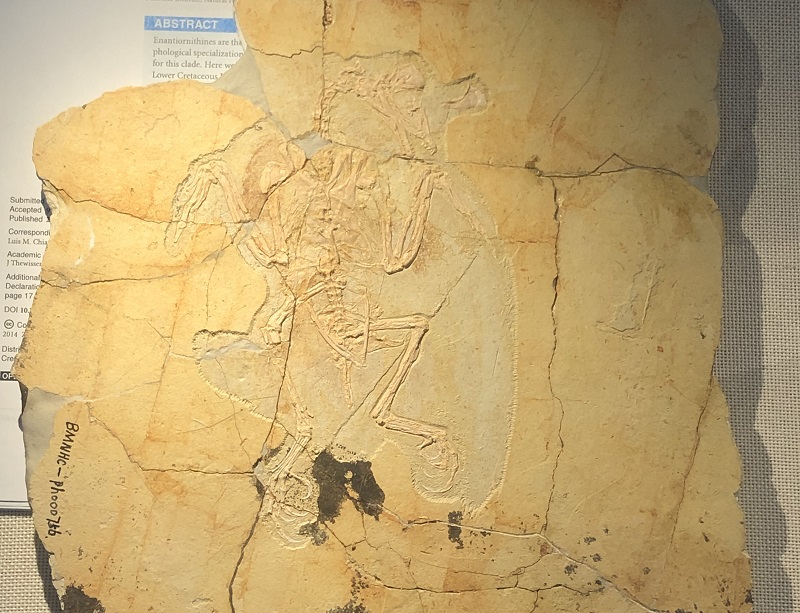BH Staff | May 19, 2023
Age and Locality: Early Cretaceous, Liaoning Province.

Zhouornis hani, commonly known as the “Hani’s bird” after its discoverer, represents an intriguing chapter in the story of avian evolution. This prehistoric bird lived during the Cretaceous period, a time when dinosaurs roamed the earth, and early birds were beginning to take flight in the skies. The discovery of Zhouornis hani has provided paleontologists with valuable insights into the evolutionary transition from dinosaurs to modern birds.
The fossil remains of Zhouornis hani were found in China, a country renowned for its rich deposits of well-preserved dinosaur and early bird fossils. This particular species showcases a fascinating mix of characteristics, blending traits of both its dinosaur ancestors and its avian descendants. For example, it possessed teeth and a long bony tail, reminiscent of dinosaurs, while also exhibiting features indicative of flight capabilities, such as wings and feathers.
The significance of Zhouornis hani lies in its position within the evolutionary tree. It helps to fill the gaps in our understanding of how features essential for flight evolved over time. By studying fossils like Zhouornis hani, scientists can trace the gradual adaptations that led to the development of modern birds, from the shape and structure of wings to the transformation of tails for better aerodynamics.
Furthermore, Zhouornis hani contributes to the ongoing debate about the origins of flight. Was the ability to fly developed primarily through gliding from trees, or did it evolve from the ground up, as some theories suggest? The physical attributes of Zhouornis hani, alongside comparative analysis with other early birds and their dinosaurian relatives, provide crucial data points in this discussion.
In conclusion, Zhouornis hani is not just another fossil. It represents a key piece of the puzzle in understanding the complex journey of avian evolution. Through the lens of this ancient bird, we gain insight into the dynamic interplay of adaptation and environment that has shaped the diversity of life on Earth, leading from the age of dinosaurs to the birds we see today.
